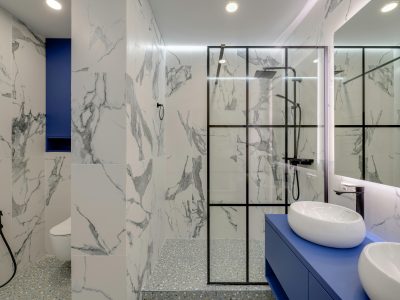In recent years, virtual reality (VR) has emerged as a transformative technology, promising to reshape various aspects of our lives. One area where its impact is particularly evident is in the realm of retail. With the advent of VR, the traditional brick-and-mortar shopping experience is undergoing a radical transformation, raising the question: Could virtual reality make ‘going shopping’ in real life a thing of the past?
The Rise of Virtual Reality in Retail
Virtual reality technology has made significant strides since its inception, offering immersive and interactive experiences that were once thought to be the stuff of science fiction. In the retail sector, VR is being leveraged to create virtual storefronts, allowing consumers to browse and purchase products from the comfort of their own homes.
One of the primary advantages of VR in retail is its ability to overcome the limitations of physical space. With VR, retailers can showcase an extensive range of products without the need for expansive store layouts or inventory storage. This not only reduces overhead costs for businesses but also provides consumers with access to a wider selection of goods than they would find in a traditional store.
Moreover, VR enables retailers to create personalized shopping experiences tailored to individual preferences and tastes. Through data analytics and machine learning algorithms, VR platforms can analyze consumer behavior and preferences to offer personalized product recommendations and curated shopping experiences. This level of customization enhances the overall shopping experience and fosters customer loyalty.
The Virtual Shopping Experience
Imagine stepping into a virtual mall from the comfort of your living room. As you put on your VR headset, you find yourself transported to a bustling shopping district, complete with storefronts showcasing the latest fashion trends, electronic gadgets, home decor, and more. You can browse through products, interact with virtual assistants, and even try on clothes using virtual fitting rooms.
Virtual reality technology simulates the sensory aspects of the shopping experience, allowing users to examine products up close, view detailed specifications, and visualize how items would look in real life. Advanced rendering techniques and haptic feedback systems further enhance the sense of realism, enabling users to feel textures, weights, and other tactile sensations.
In addition to virtual storefronts, VR-powered social shopping platforms are gaining popularity, allowing users to shop together with friends and family in virtual environments. These social shopping experiences mimic the social dynamics of traditional shopping outings, enabling users to interact with others, seek opinions, and make joint purchasing decisions.
Overcoming Physical Limitations
One of the most significant barriers to traditional shopping is physical accessibility. For individuals with mobility impairments or those living in remote areas with limited access to retail outlets, VR offers a solution by bringing the shopping experience directly to them. With VR, anyone with an internet connection and a compatible device can access a virtual marketplace and shop for products with ease.
Moreover, VR transcends geographical boundaries, allowing consumers to browse and purchase products from retailers located anywhere in the world. This opens up new opportunities for small businesses and independent artisans to reach a global audience without the need for expensive brick-and-mortar storefronts or extensive marketing campaigns.
Challenges and Limitations
Despite its potential, virtual reality technology still faces several challenges that must be addressed before it can fully replace traditional shopping experiences. One of the primary concerns is the cost and accessibility of VR hardware. While VR headsets have become more affordable in recent years, they still represent a significant investment for many consumers.
Furthermore, the immersive nature of VR experiences can be both a blessing and a curse. While it allows for unparalleled engagement and interactivity, it also raises questions about privacy and security. Users may be hesitant to share personal information or make purchases within virtual environments due to concerns about data breaches or identity theft.
Additionally, there is the issue of sensory fidelity—the ability of VR technology to replicate real-world sensations accurately. While advancements in haptic feedback and sensory simulation have improved the realism of VR experiences, there is still room for improvement in areas such as visual fidelity, motion tracking, and spatial audio.
The Future of Retail
Despite these challenges, the future of retail appears to be inexorably linked with virtual reality technology. As VR hardware becomes more affordable and accessible and as developers continue to refine immersive experiences, virtual shopping environments will become increasingly commonplace.
In the not-too-distant future, ‘going shopping’ may no longer involve a trip to the mall or a stroll down Main Street. Instead, consumers may don a VR headset and immerse themselves in a virtual marketplace where the possibilities are limited only by their imagination.
Ultimately, virtual reality technology has the potential to revolutionize the way we shop, offering unparalleled convenience, selection, and personalization. While the traditional shopping experience may never disappear entirely, its virtual counterpart is poised to become an integral part of the retail landscape, transforming the way we buy and sell goods in the digital age.













Comments